Growing Brussels sprouts in containers isn’t just a savvy space-saving move—it’s a full-on strategy for snagging the freshest, tastiest sprouts from the comfort of your balcony or patio. Forget about sprawling garden plots; all you need is a pot, some dirt, and a can-do attitude. Whether you’re an urban dweller with little space left in the garden bed, or just looking to try something new, this guide will help you turn those little green orbs into the talk of your kitchen table. Get ready to dive into the world of compact cabbages and homegrown harvests!
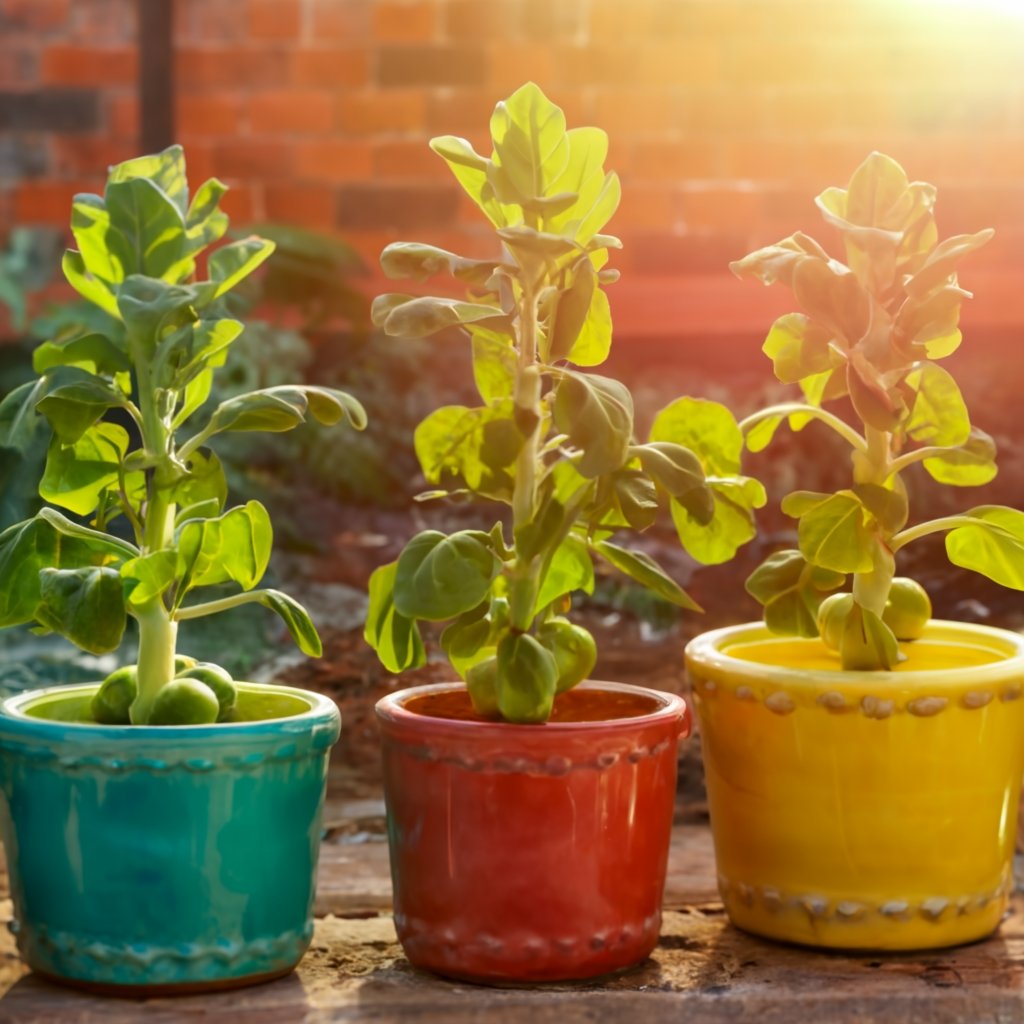
Grow Brussels Sprouts in Pots: Selecting the Ideal Container
Size and Material
So where do you start? Think of your pot as the sprout’s personal apartment—size definitely matters. It should be at least 12 inches (30 cm) in diameter and depth. This gives the roots enough room to spread out and support the top growth. Now, about the material: plastic pots are lightweight and easy to move, but can get too warm in hot climates. On the flip side, clay pots are heavier but excellent at regulating soil temperature.
Here’s a quick table to guide you through choosing the right size:
| Size (Gallons) | Diameter (Inches) | Approximate Capacity |
|---|---|---|
| 3 | 12 | 1 Brussels Sprout Plant |
| 5 | 14 | 1-2 Brussels Sprout Plants |
| 7 | 16 | 2-3 Brussels Sprout Plants |
| 10 | 18 | 3-4 Brussels Sprout Plants |
| 15 | 20 | 4-5 Brussels Sprout Plants |
Note: These are estimates. Individual growth may vary.
Drainage and Soil Considerations
Got your pot picked out? Great, let’s talk about the foundation—the soil. Brussels sprouts require well-drained soil. Why? Because no plant likes wet feet, especially not these little cabbages. Make sure your chosen container has holes in the bottom; if not, get out the drill. As for the soil mix, go for a light, well-draining potting mix. A pH between 6.0 to 6.8 is the sweet spot for sprouts, which is slightly acidic, just like their personality.
How to Grow Brussels Sprouts From Seed
Understanding the Growing Season
Brussels sprouts are the cool kids of the vegetable world, thriving in chillier temps. Their growing season kicks off in early spring if you’re looking for a mid to late summer harvest. Want sprouts to accompany your holiday feasts? Then plant brussels sprouts in late summer for a winter harvest. Mark your calendars, because these greens march to the beat of the cooler seasons.
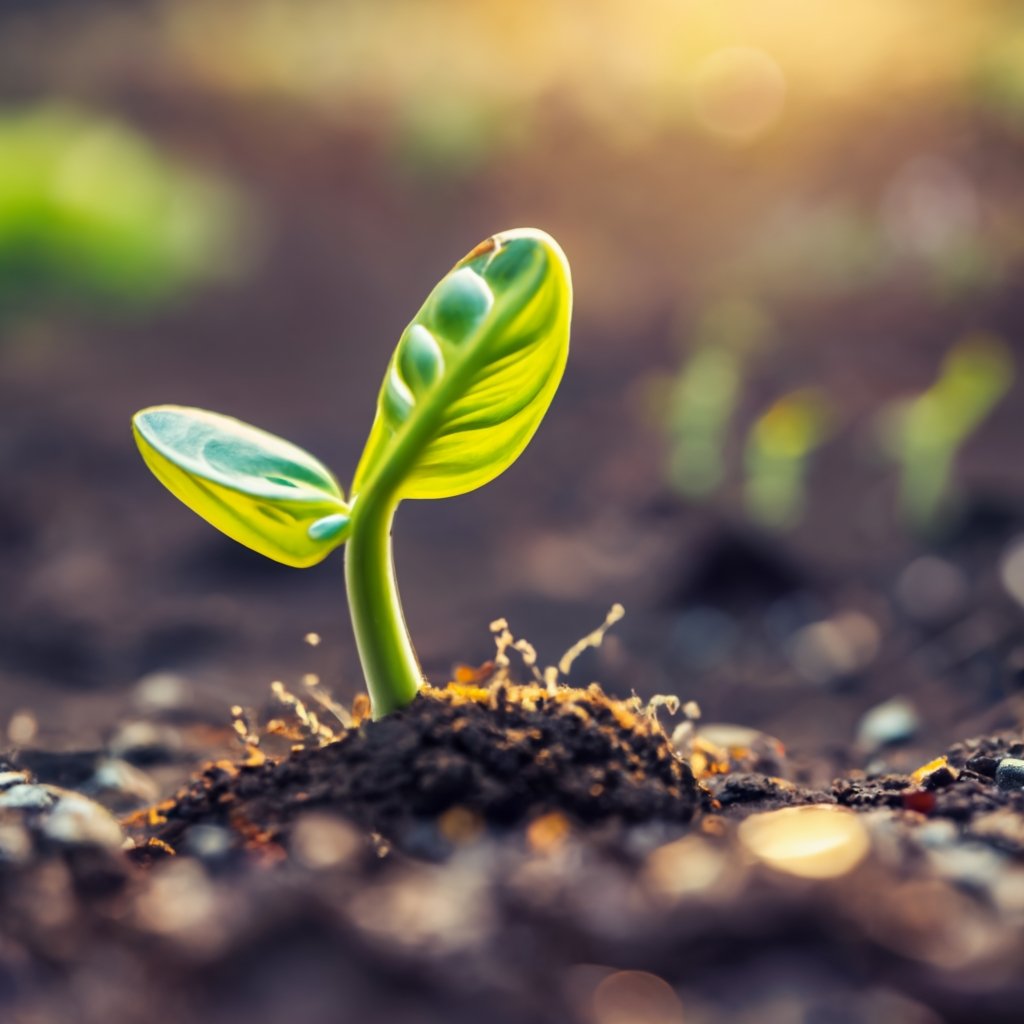
Sowing the Seeds
When you’re ready to plant, bury those seeds about 1/2 inch (1.3 cm) deep into their homes, and about 18 to 24 inches apart. They’re not fond of the limelight, so keep them undercover. Waiting for sprouts to pop up is a bit like watching paint dry, but within 5-20 days, you’ll spot some green. Keep the soil moist, like a wrung-out sponge, to kick-start their growth without drowning them.
Seedling Care and Transplantation
Got sproutlings? Great! As they graduate from nursery to their permanent residence, remember they’re still in their tender years. Give them about 4-6 weeks to beef up before moving day. Space is key—each sprout deserves its own pot, or a roommate if you’re working with a 5-gallon (19 liters) space.
When transplanting, be as gentle as a fairy’s touch. These aren’t clothes you’re stuffing into a drawer; think of it as nestling a gem into its setting. Loose, airy soil is their best friend, allowing roots to wander freely.
And communication is a two-way street, even with plants. Observe and respond to their cues for water and sunlight, and they’ll grow up to make you proud. Keep at it, and soon you’ll be the neighborhood Brussels sprout whisperer!
The Ideal Conditions for Brussels Sprouts in Containers
Sunlight and Spacing
Have you ever noticed how plants lean towards the sun? Brussels sprouts need about 6 hours of sunlight to strut their stuff. Place your sprouts in pots where they can soak up some rays. Now, let’s talk elbow room. These sprouts need their personal space—about 18-24 inches (45-60 cm) apart if they’re in a shared container. This gives each plant enough room to flourish without competing for their solar spotlight.
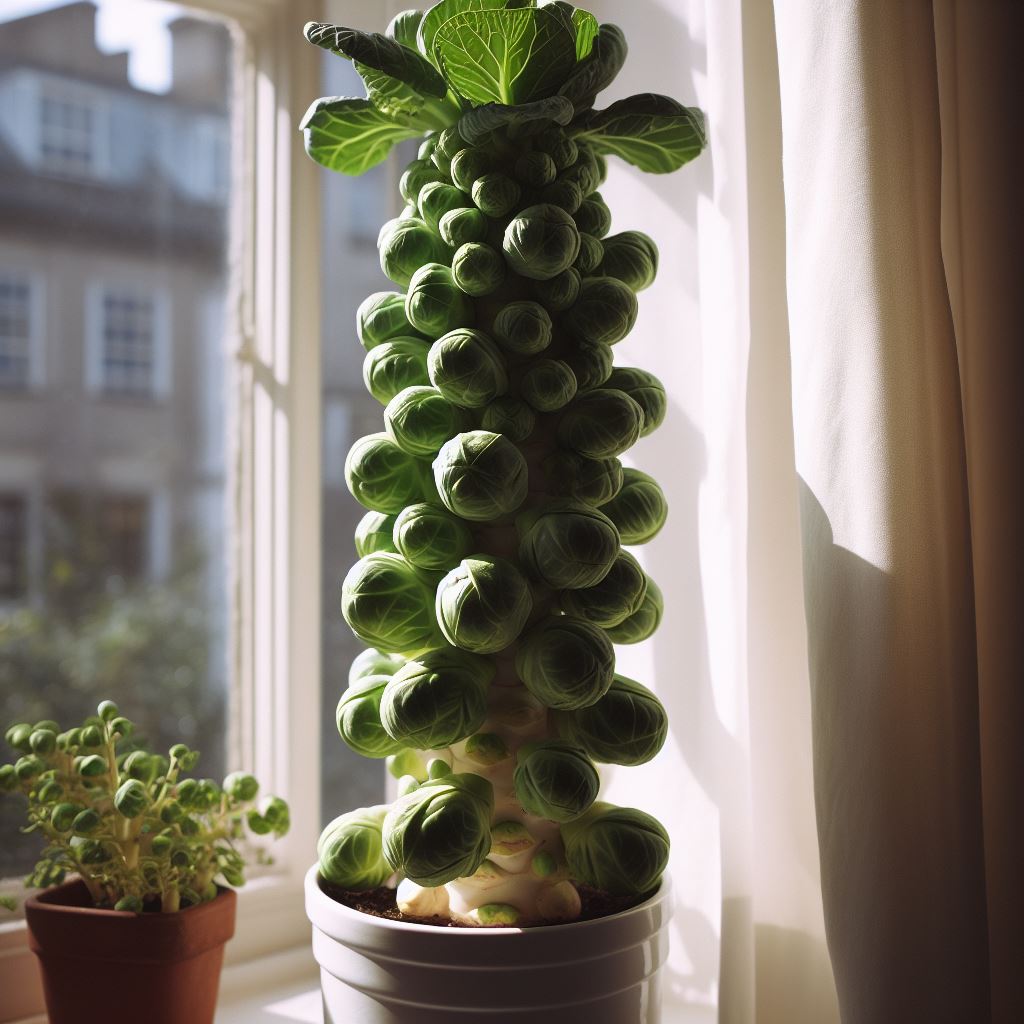
Watering and Nutrition
Water is to plants what coffee is to humans—absolutely essential. Here’s how to ensure your sprouts get their hydration without going overboard:
- Do: Check the soil before watering. The top inch should be dry to the touch.
- Don’t: Turn the soil into a swamp. Overwatering is the fast track to unhappy, unhealthy sprouts.
- Do: Use a watering can or hose attachment that mimics rain for a gentle soak.
- Don’t: Blast them with water. You’re watering, not power washing.
- Do: Add a layer of mulch to help retain moisture.
- Don’t: Let the mulch touch the plants. Think of it like a no-hug zone.
Nutrition-wise, Brussels sprouts aren’t the type to demand a five-course meal. A modest helping of well-rotted compost or a balanced fertilizer every few weeks is like a multivitamin for them—just enough to boost their growth without going over the top.
Remember, too much of a good thing (yes, even nutrients) can cause a Hulk-like growth spurt that’s all leaves and no sprouts. Keep it balanced, and your sprout plants will be the talk of the container garden.
Supporting Your Sprouts
Staking and Supporting
As your Brussels sprouts grow, they might start to look like they’re practicing for a limbo contest. To keep them standing tall, you’ll want to stake them. In your garden, a single sturdy stake next to the main stem will do. Tie the stem to the stake loosely with soft ties—think of it as a gentle pat on the back, not a full-on bear hug. This way, when the wind blows, your sprouts won’t be doing the twist.
Pests and Common Issues
Now, let’s chat about uninvited dinner guests: pests. They love your sprouts as much as you do, but it’s time to lay down the law. Here’s a step-by-step guide to keeping pests at bay:
- Inspect Regularly: Keep an eagle eye on your plants. If you spot any critters, it’s go time.
- Water Wisely: Water at the base of the plants to avoid creating a spa retreat for pests.
- Natural Predators: Encourage ladybugs and other friendly insects that like to feast on the not-so-welcome guests.
- Organic Pesticides: If things get real, go for organic pesticides. It’s like choosing the bouncer for your sprout party—selective and effective.
- Clean Up: Remove any dead leaves or debris. A tidy garden is less inviting to pests.
- Rotate Crops: If you’ve had trouble in the past, rotate your crops next year. Pests are less likely to return to a garden that’s always changing.
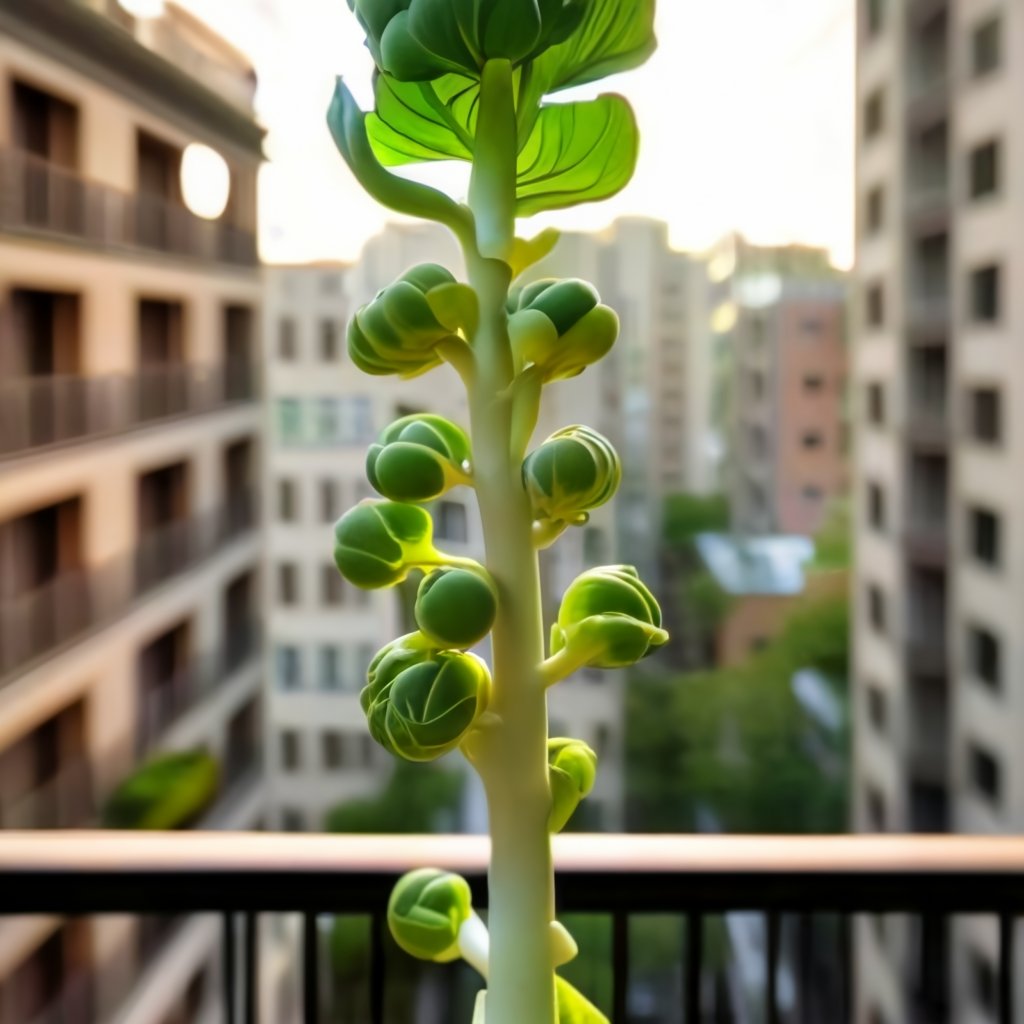
Armed with these tips, you’re ready to defend your sprouts. Remember, the best offense is a good defense—keep those pests guessing and your Brussels sprout plants will thank you.
Harvesting Brussels Sprouts
Knowing When to Harvest
The moment of truth: when to harvest your Brussels sprouts. You don’t need a crystal ball for this; size will tell you everything. Once your sprouts look like they’re about 1 to 2 inches in diameter (2.5 to 5 cm) — about the size of a ping-pong ball—they’re good to go. They should be firm and green, like a miniature cabbage. Timing is usually from late fall to early winter, but if you’ve been a vigilant sprout parent, you might see them ready earlier. Remember, patience is key; don’t rush your harvest.
Harvesting Techniques
Now, how to harvest without turning your plant into a stump? It’s simple: start from the bottom. Harvest the sprouts by twisting them off at the base, or use a sharp knife to cut them off cleanly. By picking the lower sprouts first, you encourage the plant to focus its energy on developing the upper ones. It’s not a one-time deal; this method gives you a rolling harvest, with sprouts maturing in waves rather than all at once. Neat, right?
Keep an eye on those plants—sometimes they try to bolt and produce flowers, especially if they’re confused by the weather. If you see yellow flowers starting to form, it’s time to harvest pronto.
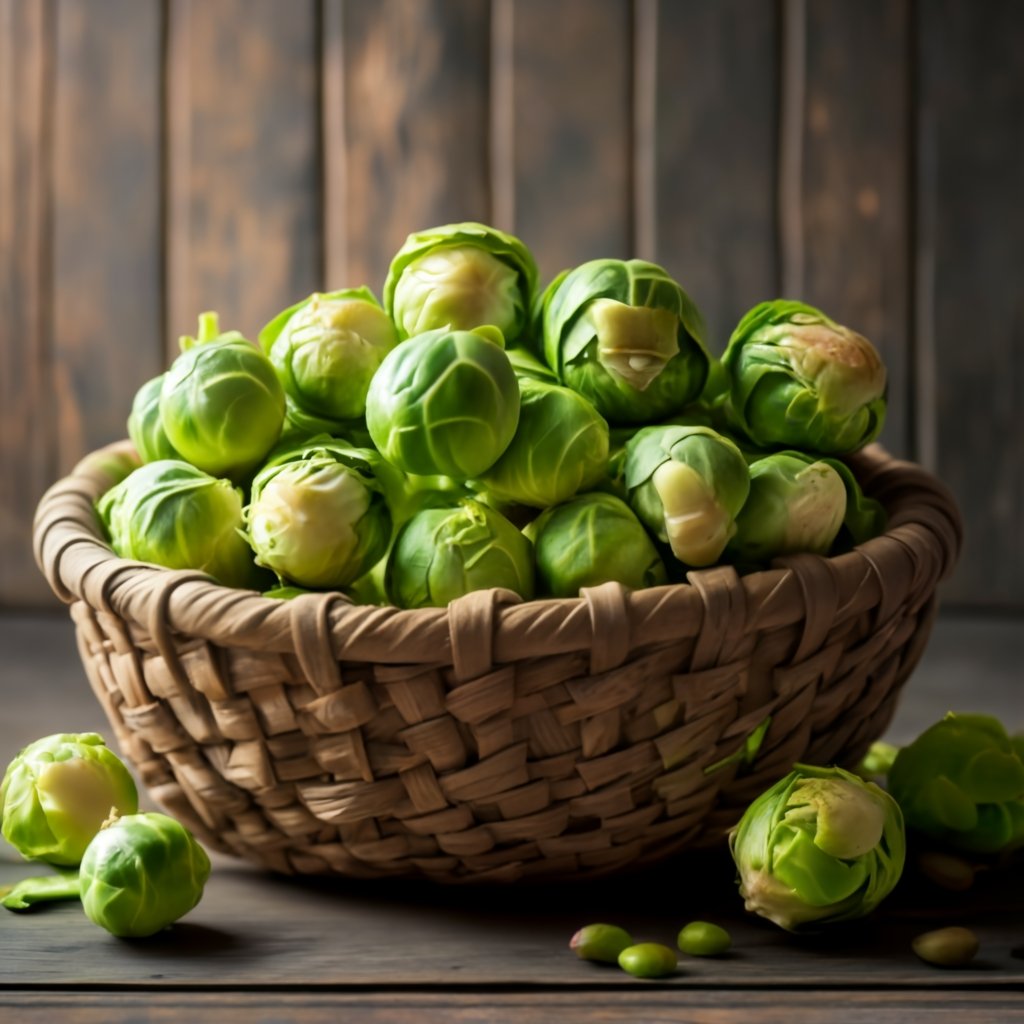
The Best Varieties Of Brussel Sprouts For Container Gardening
Selecting the Right Variety
Picking the right variety of Brussels sprouts for your container is like choosing a Netflix show; you want a good fit for your taste and schedule. Some varieties are more suited to container life than others. ‘Falstaff’, for example, adds a pop of purple and is quite the compact grower. ‘Dwarf Gem’ is another small space champion, perfect for your container. And for a classic green sprout, ‘Long Island Improved’ is like the old faithful of the sprout world. So, take your pick and get ready to grow Brussels sprouts that are just right for you and your space.
Overwintering Brussels Sprouts
When the mercury drops, it’s time to think about overwintering your sprouts. Brussels sprouts in containers can handle the cold, but they don’t want to freeze. If you live in a frostbite-friendly area, move your containers indoors to a cool, frost-free spot like a garage or shed. This way, your sprouts get a little winter retreat, and you get to extend your harvest. A little mulch on top can be like a cozy blanket for the roots. Just remember, if you bring them inside, they still need some light—so a sunny window could become their winter getaway.
Final Tips for Growing Brussels Sprouts in Pots
What Not to Plant Next to Brussels Sprouts?
Brussels sprouts are a bit like introverts at a party—they don’t love everyone. Keep them away from strawberries, tomatoes, and pole beans; it’s a classic case of bad chemistry. These plants can be a real downer for your sprouts, leading to stunted growth or even disease. Think of it as avoiding that one awkward neighbor who just doesn’t gel with the vibe.
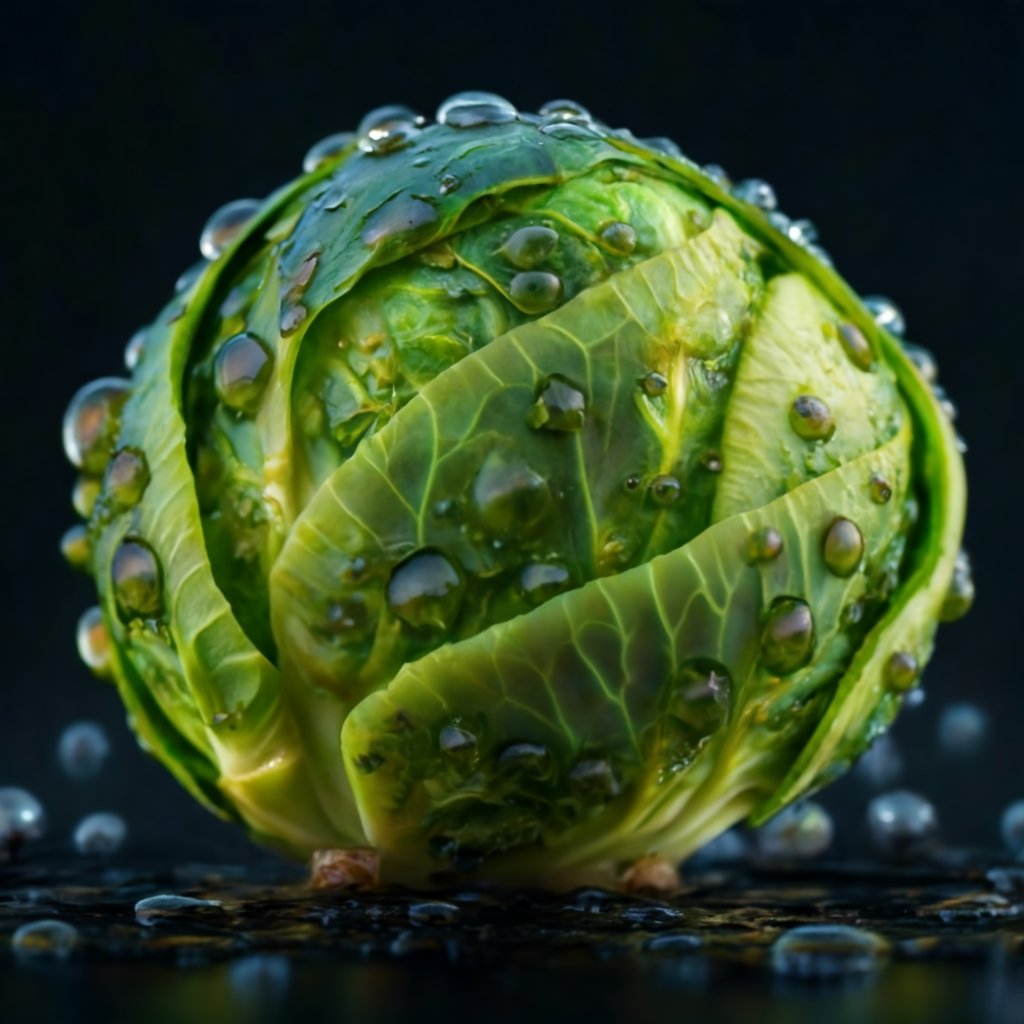
Do Brussels Sprouts Grow Well in Raised Beds?
Absolutely! Brussels sprouts in raised beds are like royalty on thrones. They love the drainage and the fluffy soil that raised beds provide. Plus, you’ll save your back some trouble during harvest time. It’s a win-win, with your sprouts sitting high and mighty, basking in their elevated glory.
Do You Harvest Brussels Sprouts All at Once?
Nope, Brussels sprouts are the gift that keeps on giving. You harvest from the bottom up, plucking the plump ones as they’re ready. It’s like picking only the ripe apples from a tree. This way, your sprouts keep coming in waves, extending the bounty and your culinary delights.
How Do You Store Brussels Sprouts?
Storing Brussels sprouts is a breeze. After your harvest, stash them in the fridge’s crisper drawer—no washing necessary until you’re ready to eat. They like it chilly and dry. If you’ve got a lot, blanch and freeze them for a taste of victory gardens even when the snow’s falling. It’s like putting summer in your freezer, ready for a mid-winter feast.
